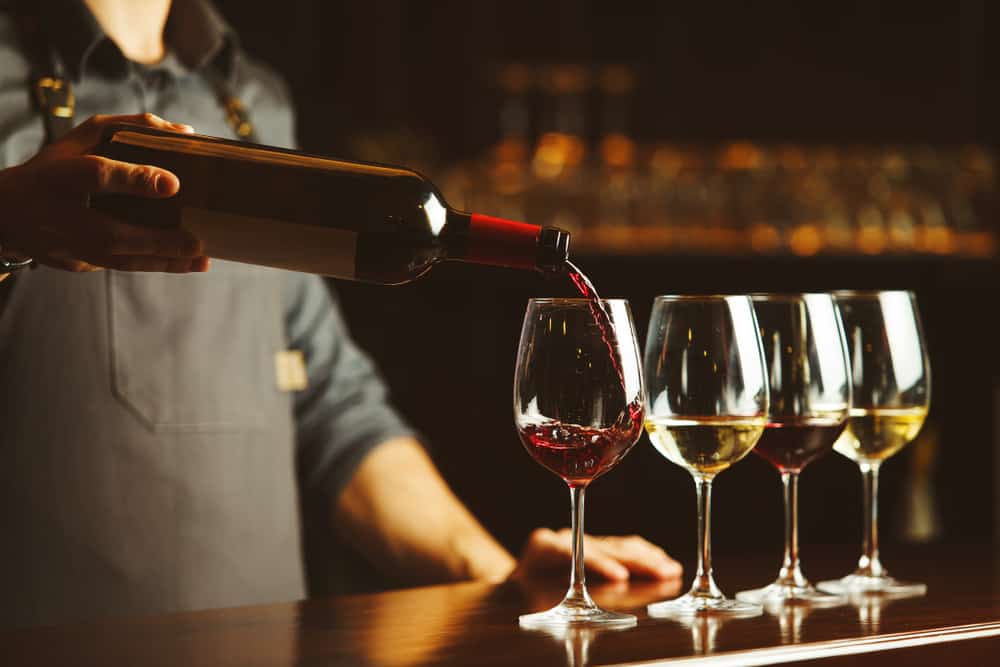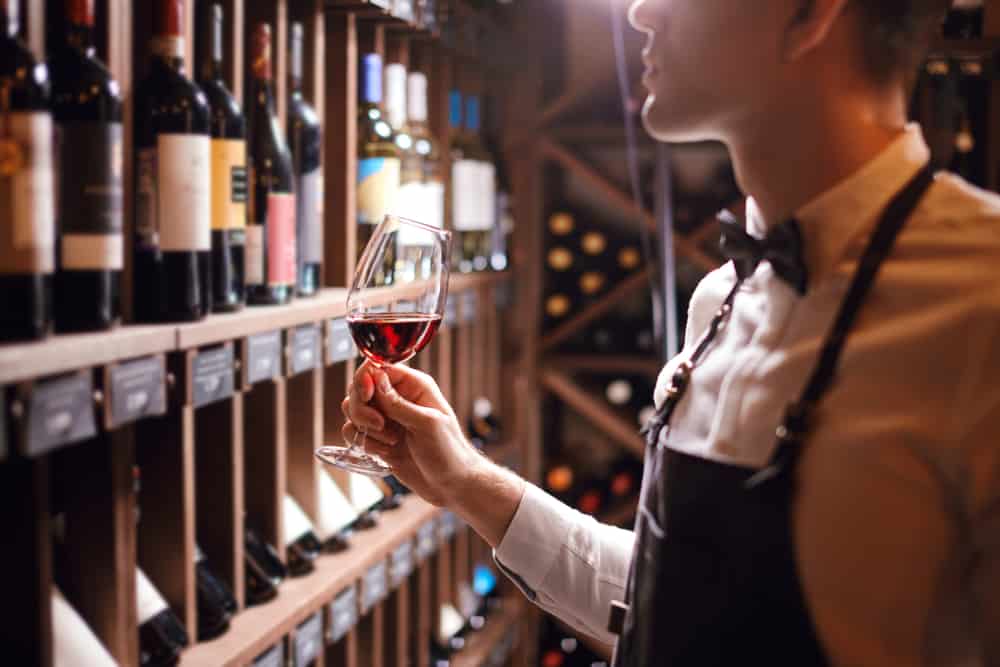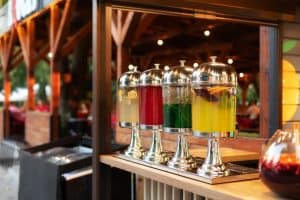
The start is the most significant part of the process, no matter the type of business you put your hand in. It is so crucial that it can make or break your business. So, careful planning and analysis are required, along with keen insight to ensure the correct steps are followed.
The wine bar is the classiest and often considered the safest option from an economic point of view, among others.
That’s not all; there is a massive variety in the types of wines catering to the taste of connoisseurs and other people.
Another prominent aspect is that wine bars are more profitable when compared with a full-scale food business, such as a restaurant.
However, the problem always comes when you try to open this business how you imagine it because reality is more tedious than what you envision.
It brings us to the question, if the wine business is so profitable and captivating, how to open a wine bar?
For starters, you should research the market for your wine bar and think of an image that goes with what you envision for your bar. The second step is finding the perfect location, licensing, dealing with cost requirements, drafting the business plan, staff recruitment, and marketing.
The article will discuss several points you should consider when opening a wine bar, so let’s get right into it.
8 Steps To Open a Wine Bar

While thinking of an idea is simple, making it into a reality is a task that takes patience, persistence, and courage.
The same holds for a wine bar business, and the following are the steps you should consider if you want to open one.
1. Market Analysis
The part that ensures that your business flies on the right note and isn’t impeded in its tracks before spreading its wings is the market analysis.
Like your business plan, market analysis is done to help you reduce the risk of failing in your business. It predicts the trends in the market, e.g., the popularity of one specific brand in a particular location, and vice versa.
Also, it helps you determine the competition and how to better position your business in the local market, which aids in constructing a distinctive image for your wine bar.
Not only that, but if done extensively, it can help you in marketing and advertising your business. But it comes with a high cost, which can be as high as half the business’s startup cost.
To conduct a market analysis yourself, check out this complete guide on how to carry out a market analysis.
2. Image of Your Wine Bar
The second factor that comes right after a market analysis is whether you have the right concept for your wine bar or just a fleeting idea.
The image of your wine bar reflects your idea and helps you to get ahead of the competition. This concept is directly linked with marketing and how you set the interior of your bar. While marketing can help you spread the name, it won’t help you come up with one.
Interior Design
This part combines with the image to create a unique sense for your wine bar. However, a thing to be mindful of when you decide on interior design is the things you like may not be to the liking of your clientele. So, it may leave you baffled about what to choose or how to design.
In this case, check out these wine bar interior designs to see what should be your primary concern in coming up with an interior design.
Another point to remember is interior design is subject to change when you start your business, i.e., to make it more suitable to the customer’s taste. So, it’s better to leave the designing factor till the end unless you have previous experience in this field.
3. Getting a Perfect Location for Your Wine Bar
The location of the wine bar impacts the cost you have to spend on starting up your business and whether it will flourish or fall off. The ideal option is to buy a bar to make the most economical choice in getting a building, so you have most of the stuff prepared.
Contrarily, you can also renovate a restaurant building for your bar or look for a location for your wine bar which complements your bar image and business.
Also, based on where the bar is located can impede your growth, reduce the sale if competitors are nearby, or become a flop option if the neighborhood doesn’t cater to the wine bar’s atmosphere.
4. Licensing and Permits
The next step is ensuring that you are allowed by the local authorities to run your wine bar smoothly without any setbacks, i.e., getting permits and licenses appropriate for your bar.
The underlying reason behind licenses and permits coming right after the location settlement is that you need to apply for them early to get them in time for your bar opening. Otherwise, you will have to delay your grand opening until you get them.
Another reason for the early appearance of licenses is to provide an idea of what type of licenses you need. These permits are based on the region or state you are in. Check out the local directories of beverage control.
Also, there are various types of licenses in alcohol in and of itself, so you should check what category of permits you need to acquire there.
Similarly, another license will be added to your list that is related to catering services if you plan to serve food in your wine bar. Check out how to acquire a food vendor’s license.
Since the wine bar will be a business, you will also have to file for business tax, get a TIN (tax identification number), and so on.
That’s why the earlier you strike, the better it is for your wine bar business, and you can open it in time.
5. Money for Your Wine Bar
Nothing works without money, which is the reality. That is why; you should consider the actual cost you will incur while trying to bring your idea to life and whether you have enough to make it reach completion.
As a general estimate, thinking that $50,000-60,000 is enough to open a wine bar is wrong. You need almost twice the amount, somewhere between $120,000-140,000, for a decent one because the cost continues to pile up as you go forward.
Also, you need to consider three times the cost if you opt for a luxurious design for your wine bar. To get such a large sum of money is no easy feat. That is why; you can always check for US small business administration loans for help.
But it makes you curious about what brings up the cost, right? The answer to that question is licenses and permits can cost you anywhere between $1,000-10,000s or more, and furniture and designing can cost anywhere from $20,000-40,000.
Similarly, getting the location, renovation, acquiring equipment, staff, and advertisement all pile up with time, and the size of the wine bar, how many people it will cater, and what type of food and wine variety you offer determines these factors.
6. Drafting the Business Plan
If you have come this far, you are already halfway through getting ready to set up your wine bar. But writing a business plan comes first before going into construction and recruitment.
How does it help, you ask? Ideas are subject to change, and getting influenced by people can lead your image in the wrong direction to what you have envisioned. In that sense, a business plan plays a significant role in keeping you true to your goals.
That’s not all; a carefully drafted business plan contains every step you should take at different points in business, which can come in handy if the situation starts to go south.
Business plans are the written form of your business. It is a theoretical analysis based on market analysis, your idea, the location you select, and the cost you will incur in getting permits, staff, and marketing.
7. Staff Recruitment and Equipment
Onwards to the next step, where you will need your wine bar to operate and be able to serve customers, i.e., staff recruitment and equipment. Before recruiting staff, you need to get the equipment for your bar to function without any hitch.
The rule of thumb is to acquire 50% more cutlery to the number of customers you serve at the bar. Also, if you deal with food, you need to get proper safety equipment in place, along with a dishwasher, stoves, cookware, glassware, and so on.
The next step is getting the staff, which will help you to manage, serve customers, and clean your wine bar. A business is not a one-person thing, you need people to operate it, and the better the staff at their job, the more your wine bar will flourish.
That is why; getting a manager can help ease the burden on yourself; getting the right bartender (with ample knowledge of wines) keeps the influx of customers, and the same goes for friendly or outgoing servers.
Lastly, acquiring a point-of-sale system should also be at the top of your priority list, i.e., if you want to keep track of sales, products bought, staff salaries, and regulars.
8. Advertising (the Most Crucial Step Before Opening)
The final step before you go towards the grand opening and get ready to deal with the customers is marketing.
Marketing determines how many customers you will get on the day you open and how many will continue to visit after the first day.
Not investing in the advertisement side is the most common mistake for most startups, leading to no customer influx. Making good relationships with other bar owners may help to some extent, but it won’t help your wine bar to get customers.
Here advertising your wine bar via internet ads, flyers, TV commercials, and so on helps. Check out marketing and promotion ideas that work.
Takeaway
To wrap up, opening a wine bar is no walk in the park. You need a massive amount of investment to start up from scratch.
Also, you need to do a market analysis, sort out an image for your bar, get a location, apply for permits, and get a written business plan to help you throughout the venture.
Similarly, recruiting staff and marketing to attract customers to your wine bar is also part of the equation, and that’s all.









